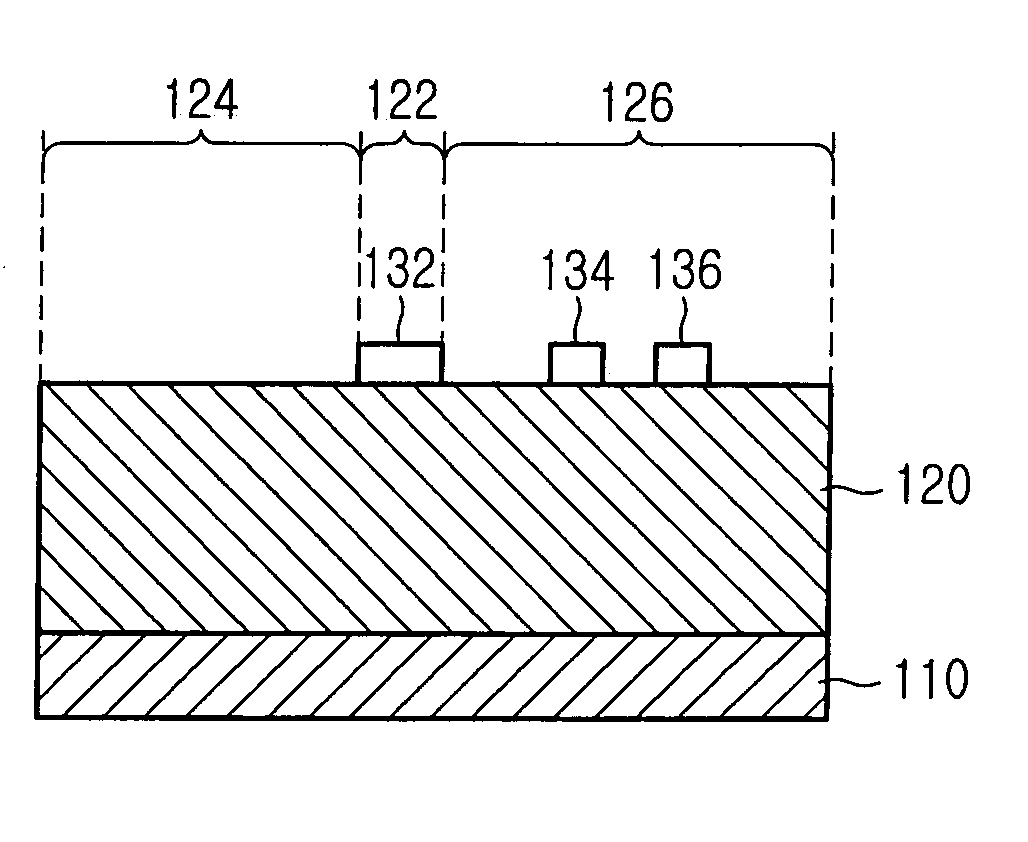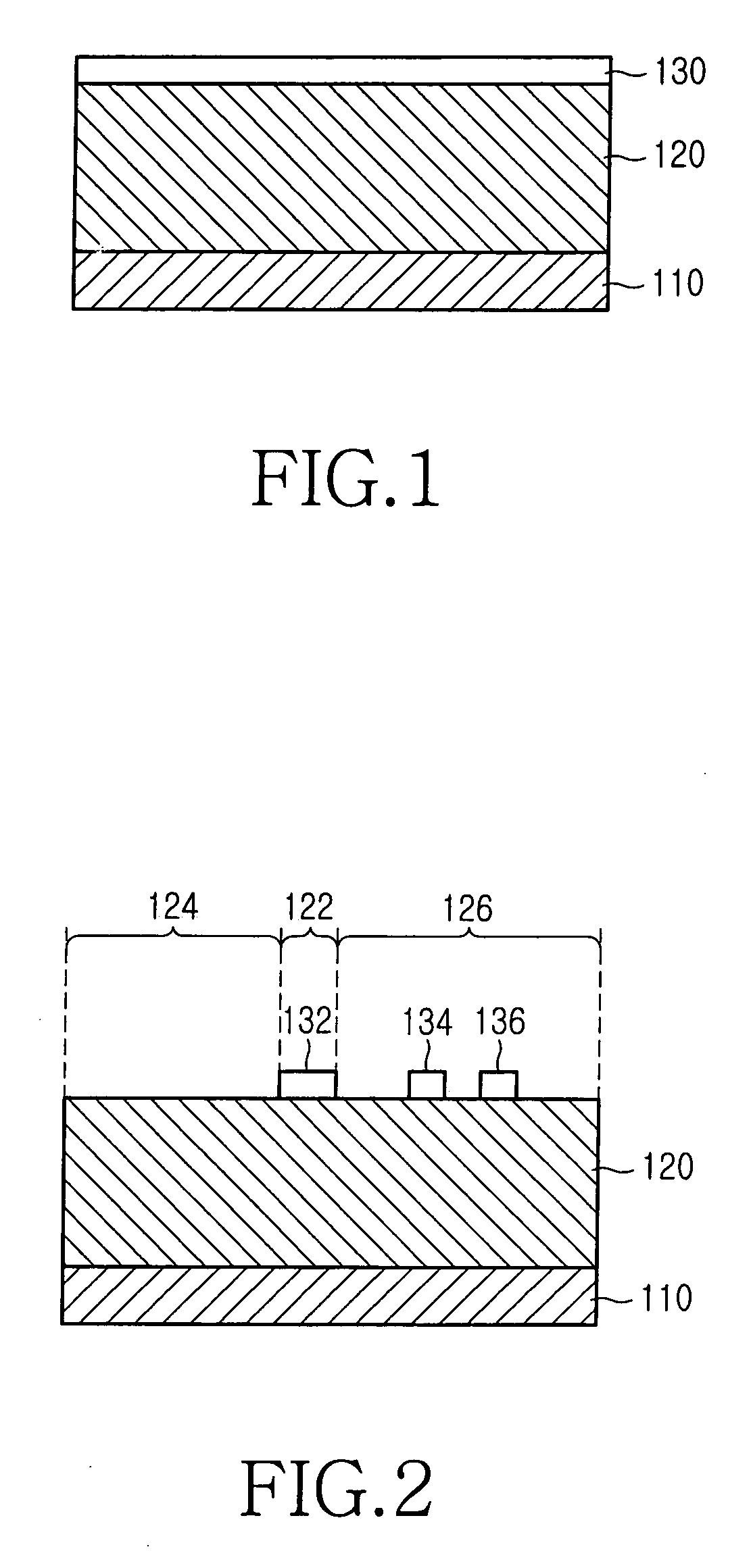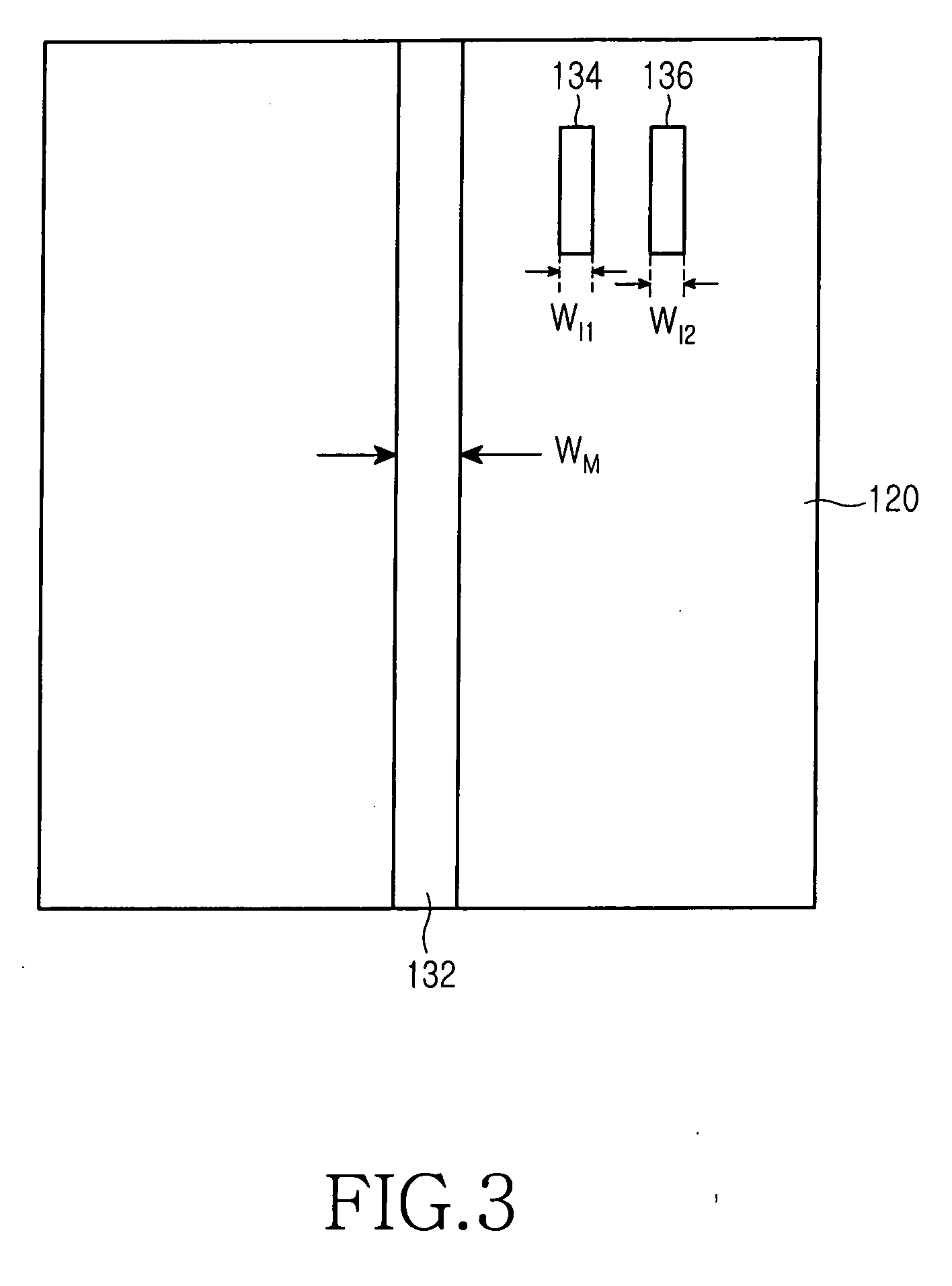Method of detecting etching end-point
- Summary
- Abstract
- Description
- Claims
- Application Information
AI Technical Summary
Problems solved by technology
Method used
Image
Examples
first embodiment
[0017] FIGS. 1 to 5 are diagrams illustrating a method of detecting an etching end-point chip by chip according to the present invention. In particular, FIGS. 1 to 3 are illustrative diagrams of forming etching indicators. Briefly, the method of detecting an etching end-point includes the steps of: forming etching indicators; and detecting the etching end-point using the etching indicators.
[0018] Referring to FIG. 1, an active layer 120 of a multi-quantum well (MQW) structure, which is an etching object, is grown on a chip-by-chip semiconductor substrate 110 using a metal-organic chemical vapor deposition (MOCVD) technique or a molecular beam epitaxy (MBE) technique. A photoresist photolithography is performed on the mask layer 130. A mask layer 130 of a dielectric substance such as SiO2 or SiNx is layered on the active layer 120. In addition to the dielectric substance, metal, a high molecular substance, or a substance such as a semiconductor having a different physical property fr...
second embodiment
[0035] FIGS. 8 to 10 are illustrative diagrams showing a method of detecting an etching end-point according to the present invention. Briefly, the method of detecting an etching end-point includes the steps of: forming etching indicators; and detecting the etching end-point using the etching indicators.
[0036]FIG. 8 is a diagram of a wafer 210 having first to seventh etching indicators 220 to 280. As shown, each of the first to seventh etching indicators 220 to 280 has an area of 1×1 mm, and the first to seventh etching indicators 220 to 280 are comprised of units 225 to 285 of a 100×70 matrix structure. The first to seventh etching indicators 220 to 280 have units of widths of 4.3 μm, 4.4 μm, 4.5 μm, 4.6 μm, 4.7 μm, 4.7 μm, and 4.9 μm in order. If necessary, a difference of the unit widths can be set to 0.01 to 2 μm. An active layer 214, which is an etching object, is formed on the wafer 210 divided into a plurality of chips 212. A rectangular mask 216 is formed in a pattern area of...
PUM
| Property | Measurement | Unit |
|---|---|---|
| Size | aaaaa | aaaaa |
| Width | aaaaa | aaaaa |
| Size | aaaaa | aaaaa |
Abstract
Description
Claims
Application Information
 Login to view more
Login to view more - R&D Engineer
- R&D Manager
- IP Professional
- Industry Leading Data Capabilities
- Powerful AI technology
- Patent DNA Extraction
Browse by: Latest US Patents, China's latest patents, Technical Efficacy Thesaurus, Application Domain, Technology Topic.
© 2024 PatSnap. All rights reserved.Legal|Privacy policy|Modern Slavery Act Transparency Statement|Sitemap



